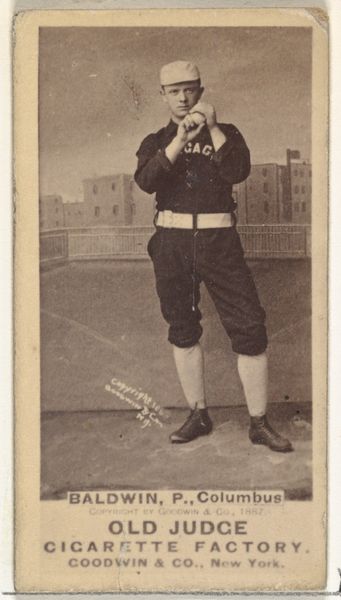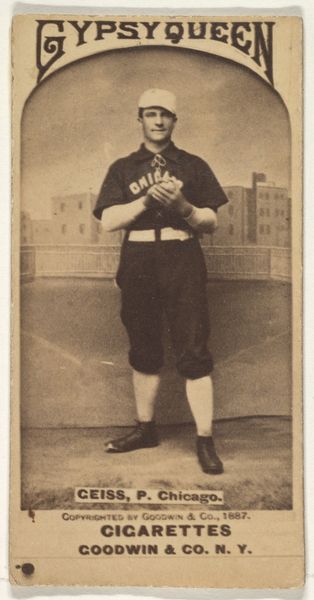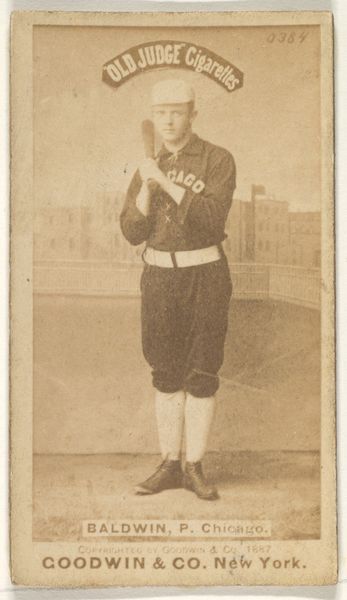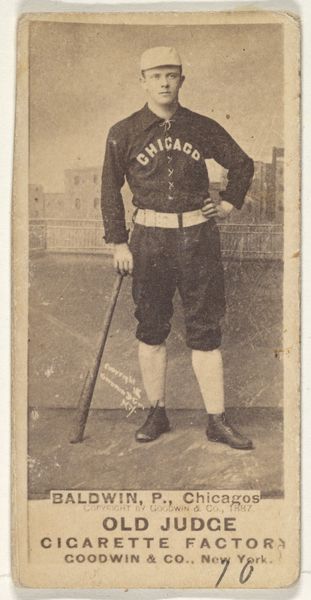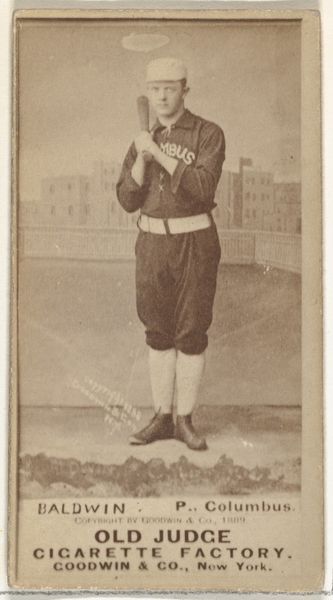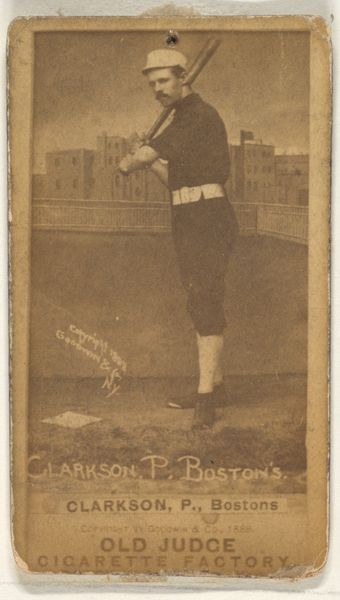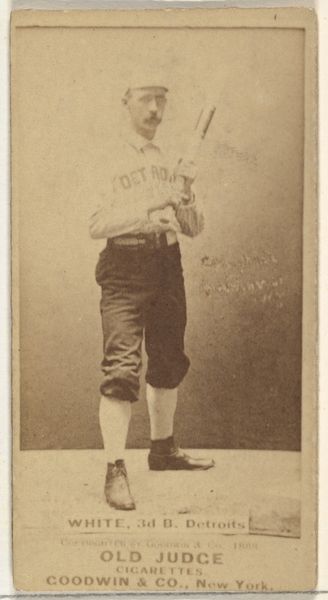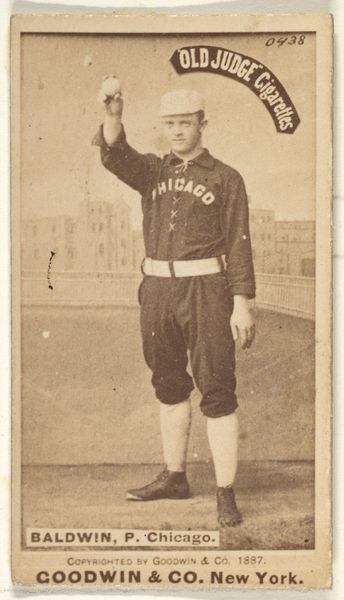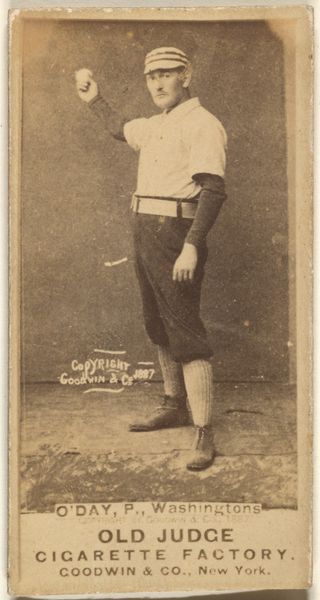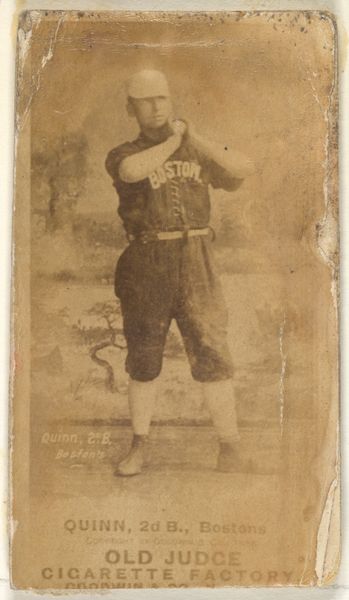
Baldwin, Pitcher, Chicago, from the Old Judge series (N172) for Old Judge Cigarettes 1887
0:00
0:00
drawing, print, photography
#
portrait
#
drawing
# print
#
photography
#
historical photography
#
men
#
genre-painting
#
athlete
Dimensions: sheet: 2 11/16 x 1 3/8 in. (6.9 x 3.5 cm)
Copyright: Public Domain
Curator: What we have here is "Baldwin, Pitcher, Chicago," a vintage baseball card produced around 1887 by Goodwin & Company as part of their "Old Judge Cigarettes" series. It’s a striking piece combining photography and printmaking. Editor: My initial impression is a sort of starkness—the sepia tone, the slightly blurry image quality. It's a compelling peek into a different era. The athlete looks surprisingly young, too. Curator: Indeed, the photographic process back then had its limitations, giving the print that grainy feel. But let's think about what it is: advertising. "Old Judge Cigarettes" obviously wanted to associate themselves with something wholesome and vigorous: baseball! They understood its growing appeal. This blending of the tobacco industry with baseball culture speaks volumes about commercial strategies during the Gilded Age. Editor: It's not just an endorsement; it’s active construction of ideals. The very act of creating these cards, inserting them into cigarette packs, naturalizes a connection between athleticism and smoking that we now know is incredibly harmful. These cards helped normalize and encourage habits we now fight against. Looking closely, he's a 'pitcher' – it’s right there – a role, labor, almost! Curator: Precisely! The materials—paper stock, ink, photographic emulsion—reveal so much about the period's technologies of mass production. Examining similar cards shows a standardized manufacturing process. There's a conscious uniformity at play here—Goodwin & Company weren't after "art"; they wanted functional, reproducible objects to boost sales. The way they controlled production of these cards also mirrors trends in how industries maximized efficiency. Editor: The image is also performing a specific kind of masculinity – one rooted in idealized strength, American nationalism via sport, but noticeably lacking the diversity we see today. It’s crucial to remember the exclusionary practices that framed this era. Whose image *wasn't* deemed valuable or worthy of circulation by companies like Goodwin? And how did this exclusion affect those communities? Curator: It’s a complex thing – this simple-seeming card! Beyond surface aesthetics and obvious portraiture, it acts as evidence of baseball as industrial material to boost products like tobacco in a period obsessed with standardizing quality while simultaneously embracing a very specific, consumerist American Dream. Editor: Definitely. It’s a stark reminder that art objects—even commercial ones like baseball cards—aren’t innocent. They are very much tangled with cultural narratives, political decisions, labor dynamics, power imbalances, all carefully distributed into mass culture. Curator: Looking deeper into the manufacturing process truly adds more perspective. It goes beyond simply noting sepia tones or artistic intent; and acknowledging baseball’s impact on popular culture during a significant growth period. Editor: Indeed. Examining objects such as this requires us to challenge not only what is depicted but *why*, how, and for whom this construction became important—questions that really allow us to challenge broader narratives around baseball history, too.
Comments
No comments
Be the first to comment and join the conversation on the ultimate creative platform.
